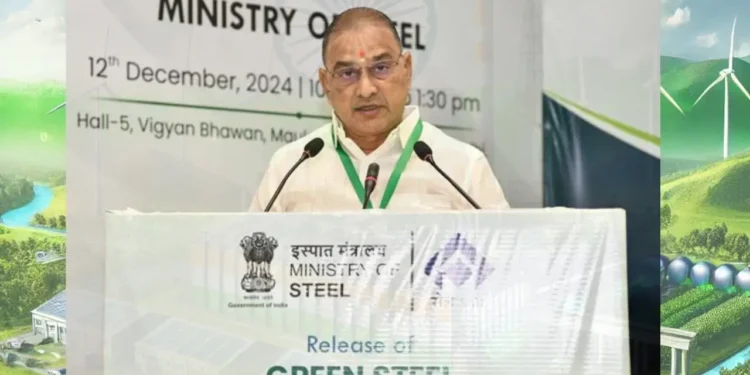Green Steel has been in news recently. This article brings information on Green Steel and its production in India. The global push for sustainability has placed the spotlight on industries with high carbon footprints, and the steel industry is one of them. As the world transitions toward a net-zero future, Green Steel has emerged as a game-changing innovation. It refers to steel that is produced with minimal or zero carbon emissions, primarily by replacing coal-based production methods with cleaner alternatives such as green hydrogen and electric arc furnaces powered by renewable energy.
Table of Contents
Why Green Steel Matters
Traditional steel manufacturing is responsible for nearly 7-9% of global CO2 emissions. As nations strive to meet their climate targets under the Paris Agreement, transforming the steel sector is essential. Green steel not only reduces emissions but also supports a circular economy, drives innovation, and enhances energy security.
Technologies Behind Green Steel Production
- Hydrogen-Based Direct Reduced Iron (H-DRI): Replaces carbon-based reducing agents with green hydrogen to extract iron from ore.
- Electric Arc Furnaces (EAF): Use electricity (preferably from renewables) to melt recycled steel scrap or DRI.
- Carbon Capture and Storage (CCS): Captures CO2 emissions from conventional processes and stores them underground or reuses them.
- Biomass Substitution: Using biochar or other renewable sources as partial replacements for coal in blast furnaces.
Global Pioneers in Green Steel
Countries like Sweden (HYBRIT Project), Germany (SALCOS), and Australia are leading the way in deploying large-scale green steel plants. These initiatives are backed by robust government support, R&D investments, and public-private partnerships.
Green Steel in India: Current Scenario
India is the second-largest steel producer globally, and its steel industry plays a vital role in economic development. However, it is also one of the highest emitters of industrial CO2. Recognizing this, India has started taking strategic steps toward greener steel production:
- National Green Hydrogen Mission: Launched to produce 5 MMT of green hydrogen annually by 2030, crucial for hydrogen-based steelmaking.
- Steel Scrap Recycling Policy: Promotes the use of scrap in Electric Arc Furnaces, reducing the need for raw iron ore.
- Public and Private Initiatives: Companies like Tata Steel, JSW, and SAIL have started pilot projects exploring hydrogen DRI and carbon capture technologies.
- Policy Support: Inclusion of green steel in India’s decarbonization roadmap under the Long-Term Low Emissions Development Strategy (LT-LEDS).
Also See: Green Steel in India
Challenges to Green Steel Production in India
Despite the growing momentum, several hurdles must be overcome:
- High cost and limited availability of green hydrogen.
- Dependence on coal for electricity and process energy.
- Insufficient infrastructure for hydrogen storage and transport.
- Need for substantial investment in R&D and retrofitting of existing plants.
Way Forward and Policy Recommendations
To accelerate the adoption of green steel, India must adopt a multi-pronged approach:
- Enhance subsidies and incentives for clean steel technology deployment.
- Invest in green hydrogen production and distribution infrastructure.
- Foster international cooperation in research and technology transfer.
- Mandate green procurement in public infrastructure projects.
Conclusion
Green Steel represents a transformative opportunity for India to lead the world in sustainable industrialization. With the right policies, innovation, and investment, the nation can become a global hub for low-carbon steel, aligning economic growth with environmental responsibility. The journey is complex, but the rewards—a cleaner planet, energy resilience, and a green economy—are well worth the effort.
Also See: World Economic Forum: What is green steel and why does the world need more of it?


